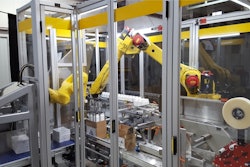Aggregation: The Achilles’ Heel of Pharma Supply Chain Operation Under a Serialization Regulation
Aggregation data is the only thing that will ease the burden of compliance for downstream trading partners in a serialized world, says RxTrace’s Dirk Rodgers.
Aug 21, 2018
Researched List: Blister Machines for Life Sciences
Need a blister machine for life sciences packaging? Our curated list features companies serving pharmaceutical, medical device, nutraceutical, and cosmetic industries. Download to access company names, locations, machine specifications, descriptions, and more.
Download Now
List: Digitalization Companies From PACK EXPO
Looking for CPG-focused digital transformation solutions? Download our editor-curated list from PACK EXPO featuring top companies offering warehouse management, ERP, digital twin, and MES software with supply chain visibility and analytics capabilities—all tailored specifically for CPG operations.
Download Now
Downloads




















